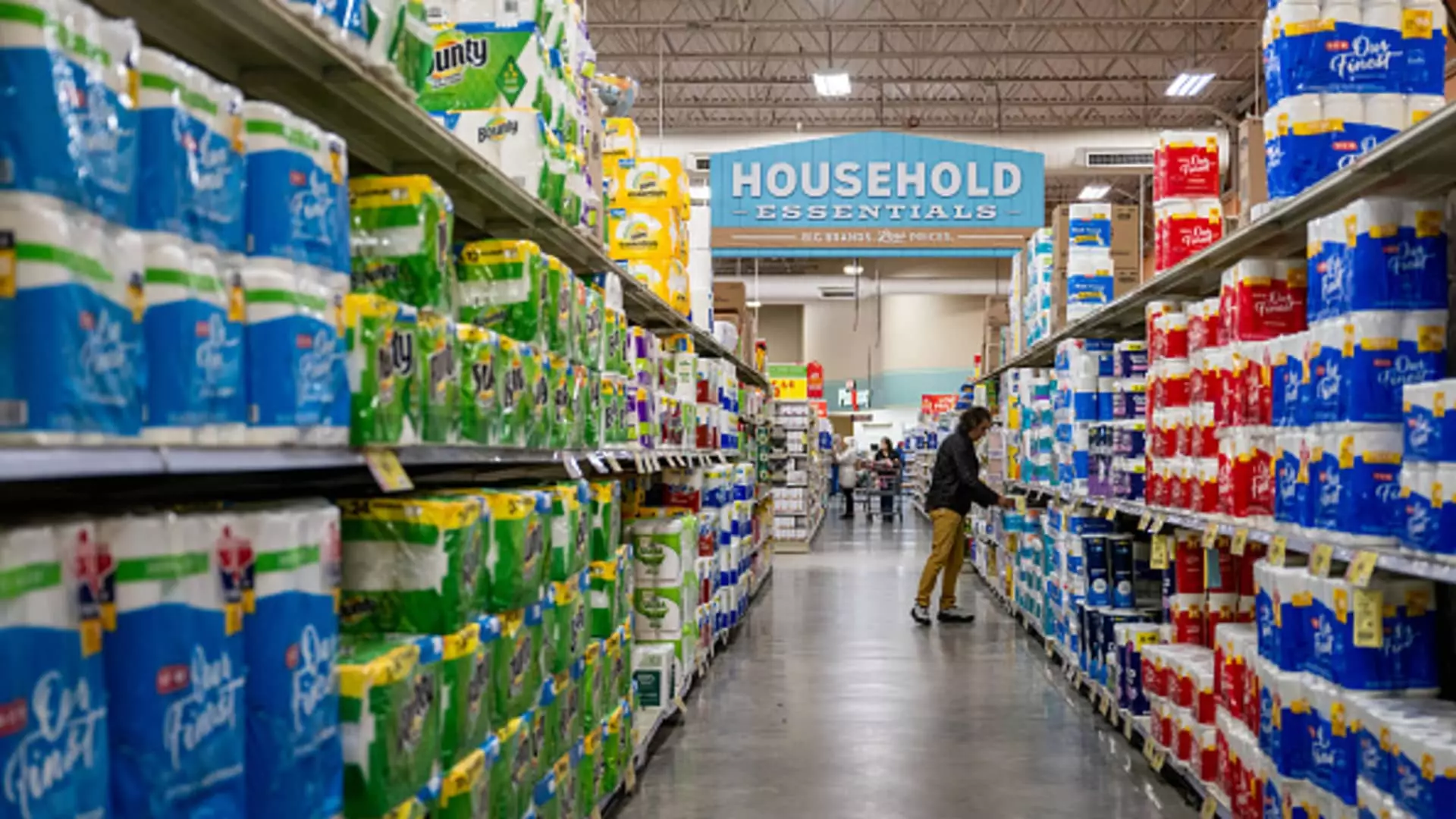The recent tariff hikes announced by the Trump administration, aimed at fostering domestic job growth, reveal a significant contradiction in their approach. While the intention behind the “America First” policy is commendable, it overlooks a critical reality: many staple items are not produced in sufficient quantities within the U.S. This oversights not only threaten to increase costs for consumers but could also undermine the very American manufacturers it purports to protect. The implications of this misguided policy will ripple through the economy, ultimately impacting families across the nation.
As an active participant in the global trade system, the U.S. depends on imports for essential goods—from coffee to toilet paper—that cannot be sustainably sourced domestically. The failure to recognize this industry’s intricacies raises pertinent questions about the effectiveness of the policy. Instead of empowering small businesses and hardworking Americans, the tariff strategy risks creating a higher cost of living, which is fundamentally at odds with the administration’s stated goals.
Inaccessible Essentials: A Price Increase on Everyday Necessities
The adverse effects of these tariffs are already on the horizon, with predictions of rising costs for everyday essentials. Coffee, bananas, and vanilla, staples of the American diet and lifestyle, are set to become more expensive. The Consumer Brands Association (CBA), representing giants like Procter & Gamble and Coca-Cola, warns that the tariffs will lead to a steep price increase for these critical items. As prices rise, consumers will be forced to reallocate their budgets, potentially sacrificing nutritional quality for affordability.
The majority of bananas consumed in the U.S. come from Guatemala, which will now face tariffs of 10%. The price hike will undoubtedly affect families who rely on these fruits as a healthy, inexpensive snack. Additionally, Madagascar, responsible for supplying over 75% of U.S. vanilla, will endure a staggering 47% tariff. This price increase on one of the world’s priciest spices will further squeeze American households, highlighting how well-intentioned trade policies can become double-edged swords.
Collateral Damage: Domestic Supply Struggles
Tariffs are intended to level the playing field, but the reality is that they may inadvertently harm American workers and businesses that rely on these imports. Decades of agricultural shifts have seen domestic crop yields decline, leaving US producers unable to meet consumer demands. For instance, over 90% of oats consumed in the U.S. come from Canada. This dependency raises alarms about the reliability of domestic food systems, particularly when tariffs disrupt longstanding supply chains.
Even non-food items, like toilet paper and personal care products, will see price spikes due to tariffs on wood pulp and palm oil. With many American households already struggling with rising costs, further increases could lead to significant financial strain. Manufacturers like McCormick are left scrambling to find solutions, but can targeted price adjustments really Counterbalance the impact of these tariffs? The uncertainty looms large.
Market Reactions: An Uneasy Trade-Off
Stock market reactions to the tariff news illustrate a paradox in consumer behavior. While markets plunged overall, shares of consumer staples climbed as investors flocked to safer bets amid uncertainty. Brands like Procter & Gamble experienced moderate increases, indicating a shift in investor sentiment toward products that will become essential in a time of rising prices.
This trend raises a troubling notion: is the increase in stocks for consumer staples driven by the anticipation of higher prices for necessities? As everyday goods become pricier, what costs are families facing? The rise in stock performance seems to disregard the broader implications of these tariffs on American consumers who may not have the luxury of investing.
The Path Forward: Rethinking Tariff Policies
The tariffs being imposed seem to serve a dual purpose: a means to support American businesses while simultaneously driving up consumer costs. In the quest for self-sufficiency through “America First,” there lies a threat to those very citizens the administration claims to support.
As a nation, we must re-evaluate our approach to trade and tariffs, embracing a balanced perspective that prioritizes both local sustainable production and an acknowledgment of our global interdependence. Only through thoughtful policymaking can we genuinely foster economic resilience and shield American households from needless financial burdens. Ignoring the complexity of the modern supply chain in favor of simplistic policy solutions will only deepen the struggle for everyday Americans. The stakes are high, and the time for reform is now.

